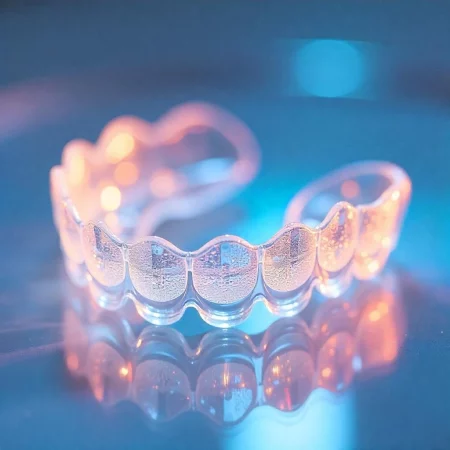Choosing Invisalign in 2025 has become one of the most popular ways for patients to achieve straighter teeth without the appearance of traditional metal braces. As more people in Gaithersburg and across the country explore this modern orthodontic option, one of the first questions they ask is: how much does Invisalign cost? Understanding the full picture—including fees, insurance coverage, and payment plans—can help you make an informed decision about your smile investment.
In this comprehensive guide, we’ll break down current Invisalign pricing, explain what’s included, and review your financial options for managing treatment costs.
Average Invisalign Cost in the U.S.

Invisalign pricing has demonstrated relative consistency in recent years, with only minor variations attributable to innovations in materials, technological advancements, and shifts in patient demand. Despite these modest fluctuations, Invisalign continues to be a widely chosen option for individuals seeking discreet and effective orthodontic care. It is essential to recognize that the actual cost for treatment can vary considerably. Influencing factors include the complexity of the orthodontic case, geographic location, the provider’s level of expertise, and any supplementary treatments required. The following provides an overview of anticipated Invisalign expenses across the United States in 2025.
National Cost Range for Invisalign
For most patients, Invisalign treatment falls between $3,500 and $8,000. The broad range accounts for differences in case complexity, provider expertise, geographic location, and the length of treatment. On average, many standard Invisalign treatments land around $5,000 to $6,000.
This price typically reflects mild to moderate alignment issues. More complex cases, involving significant crowding, bite adjustments, or longer treatment timelines, will naturally land on the higher end of the spectrum.
Factors That Affect Invisalign Pricing

Several variables influence the total price of Invisalign:
- Severity of misalignment – Simple spacing or minor corrections usually cost less than complex bite issues.
- Treatment length – More trays and longer durations lead to higher costs.
- Provider experience – Certified Invisalign providers with extensive expertise may charge higher fees but often deliver more precise outcomes.
- Location – Urban areas, particularly major metropolitan cities, may have higher fees than smaller towns or suburban practices.
- Technology and materials used – Practices offering newer scanning equipment, 3D imaging, and advanced monitoring may include these enhancements in their pricing.
Cost Differences by Region and Provider
Regional pricing differences are common. For instance, Invisalign may cost more in coastal states compared to areas in the Midwest or Southeast. Additionally, orthodontists and general dentists may charge different fees based on their training and specialization.
At G&P Dental in Gaithersburg, we strive to offer competitive Invisalign pricing that reflects both quality care and excellent value for our patients.
What’s Included in the Invisalign Price?
When considering the cost of Invisalign, it’s important to clarify precisely what’s included in the quoted price. The total fee typically covers far more than just the aligners themselves; it often encompasses initial consultations, advanced digital scans (which have thankfully replaced those uncomfortable old molds), comprehensive treatment planning, regular progress reviews, and necessary refinements or adjustments along the way. Reputable providers usually offer bundled packages, so you’re not caught off guard by hidden fees or unexpected charges. This level of transparency allows for more accurate budgeting and ensures patients receive thorough, consistent care from the beginning of the treatment process through its completion.
Consultation, Scans, and Custom Aligners
The initial stages typically include:
- Comprehensive oral exam and evaluation
- Digital 3D scans of your teeth (no messy impressions)
- Customized treatment planning
- Full set of Invisalign aligners tailored to your case
These early steps are essential for setting your treatment up for long-term success.
Office Visits and Monitoring
Throughout your Invisalign journey, regular check-ins are scheduled every 6 to 10 weeks to:
- Monitor progress
- Make adjustments if necessary
- Provide new sets of aligners
These appointments ensure your teeth are shifting correctly and allow early detection of any needed refinements.
Retainers and Post-Treatment Care
Upon completion of the active aligner phase, patients are generally provided with retainers to help stabilize their newly aligned teeth and prevent relapse. Many orthodontic providers also offer post-treatment supervision for a predetermined period, monitoring progress and making any necessary minor adjustments to promote lasting results. It is essential, however, to confirm with your provider whether retainers and follow-up appointments are incorporated into your treatment plan or require separate payment. Clarifying these aspects in advance can prevent unforeseen costs and help you navigate the entirety of your Invisalign treatment with greater assurance.
Invisalign vs Braces: Cost Comparison
The question of whether Invisalign is considerably more expensive than traditional metal braces comes up frequently among patients. In truth, the costs for both treatments are often comparable, although the final price can shift depending on factors like the complexity of the dental issues being addressed, how long the treatment takes, and the provider’s level of expertise. Invisalign may be marginally more expensive, primarily because of its advanced technology and the production of custom, nearly invisible aligners.
Still, many individuals are willing to pay a slight premium for the increased comfort, improved aesthetics, and flexibility offered by Invisalign. Ultimately, when deciding between Invisalign and traditional braces, it is important to consider not only the financial commitment but also the lifestyle implications and personal preferences involved.
Which Is More Affordable in the Long Run?
Invisalign often ranges from $3,500 to $8,000, while traditional metal braces typically range from $3,000 to $7,500. In some mild to moderate cases, Invisalign may be slightly more expensive due to lab fees, technology, and convenience factors. However, the ability to remove aligners, enjoy easier oral hygiene, and avoid dietary restrictions holds significant appeal for many adults and teens.
Are Hidden Costs Common with Either Option?
With reputable providers, hidden costs should not occur. Always ask for a full financial breakdown that includes:
- Diagnostic scans
- Aligner trays or brackets
- Office visits
- Refinements
- Retainers
- Post-treatment care
A clear, itemized quote allows you to compare treatment options accurately.
How to Pay for Invisalign Treatment
In regards to financing Invisalign, several practical solutions are available to alleviate the financial burden. Many dental providers offer installment plans, allowing patients to distribute payments over an extended period often with minimal or zero interest. Dental insurance policies may also contribute partial coverage for Invisalign treatment. Furthermore, individuals can utilize Health Savings Accounts (HSAs) or Flexible Spending Accounts (FSAs) to help offset the associated costs. Considering these options can render Invisalign treatment a more attainable and financially manageable pursuit for patients seeking orthodontic care.
Insurance Coverage or Invisalign
Many dental insurance plans offer orthodontic benefits that partially cover Invisalign, often up to $1,000 to $3,000 depending on your plan. However, not all policies include adult orthodontic benefits, so it’s essential to check with your insurer.
At G&P Dental, our administrative team assists patients in reviewing coverage, submitting claims, and maximizing available insurance benefits.
Flexible Spending (FSA) and Health Savings (HSA)
If you have access to an FSA or HSA account, you may use these funds to pay for Invisalign treatment using pre-tax dollars. This can offer significant savings by reducing your taxable income while funding your care.
Many patients use FSA or HSA funds to cover portions not paid by insurance or to spread payments across multiple plan years.
Monthly Payment Plans and Financing Options
In-house financing or third-party lenders (such as CareCredit or LendingClub) offer monthly installment plans. Depending on the provider, these plans may feature:
- Low or zero interest for qualifying credit
- Custom payment schedules based on budget
- Immediate treatment access without waiting for full payment
Financing allows patients to begin treatment while spreading costs over 12 to 36 months or longer.
Finding Invisalign Near Me at a Fair Price
Selecting a provider for Invisalign treatment goes far beyond simply comparing costs. It’s crucial to identify a practitioner with demonstrated expertise who values both clinical excellence and patient comfort. Effective communication is essential, look for transparency in pricing and payment plans that won’t cause unnecessary financial strain. A provider who tailors treatment to your individual needs, rather than relying on generic solutions, is key. Ultimately, your choice of Invisalign provider can profoundly influence not only the outcome of your treatment but also your overall confidence and satisfaction throughout the process.
Comparing Local Invisalign Providers
When comparing providers near Gaithersburg, consider:
- Invisalign certification and experience
- Patient reviews and testimonials
- Technology used for scanning and monitoring
- Office atmosphere and support staff
- Transparent pricing and financing flexibility
At G&P Dental, we’re proud to combine advanced Invisalign technology with attentive care that prioritizes your comfort, confidence, and long-term results.
Questions to Ask at Your Consultation
Before committing to treatment, ask potential providers:
- Is my quote all-inclusive?
- How many Invisalign cases have you treated?
- Will you handle insurance claims on my behalf?
- What happens if refinements are needed?
- Are retainers included in my cost estimate?
Clear answers to these questions will ensure you feel informed, confident, and fully prepared to start your Invisalign journey.
Frequently Asked Questions (FAQs)
1. How much is Invisalign on average in 2025?
In 2025, Invisalign treatment typically ranges from $3,500 to $8,000. The final cost depends on case complexity, provider expertise, geographic location, and length of treatment. Simpler cases requiring fewer aligners are generally less expensive, while complex orthodontic corrections may fall on the higher end of the range.
2. Does dental insurance cover Invisalign treatment?
Many dental plans include partial coverage for Invisalign, especially if orthodontic benefits are part of your policy. Coverage amounts vary but often range from $1,000 to $3,000. It’s important to verify your specific policy details with your insurance provider or ask your dental office to assist in checking your benefits.
3. Is Invisalign more expensive than braces?
In many cases, Invisalign is slightly more expensive than metal braces, though the difference is often modest. Invisalign’s added convenience, removability, and aesthetic benefits justify the cost for many patients. Severe cases that require complex corrections may bring the costs of both treatments closer together.
4. Can I pay for Invisalign in monthly installments?
Yes, many dental offices offer monthly payment plans through in-house financing or third-party lenders. These plans can break the total cost into affordable monthly payments over 12, 24, or even 36 months, making it easier to fit treatment into your budget while starting care right away.
5. Are there any extra fees beyond the base cost?
Reputable providers typically offer all-inclusive pricing that covers consultations, scans, aligners, office visits, and retainers. However, refinements or additional aligners may sometimes be necessary, depending on treatment progress. Always ask for a complete financial breakdown to avoid unexpected fees.
Ready to transform your smile with Invisalign? Our team can provide a personalized treatment plan and go over all your pricing options. We’ll help you understand the costs, insurance coverage, and payment plans available. Schedule your consultation today and take the first step toward your perfect smile.


